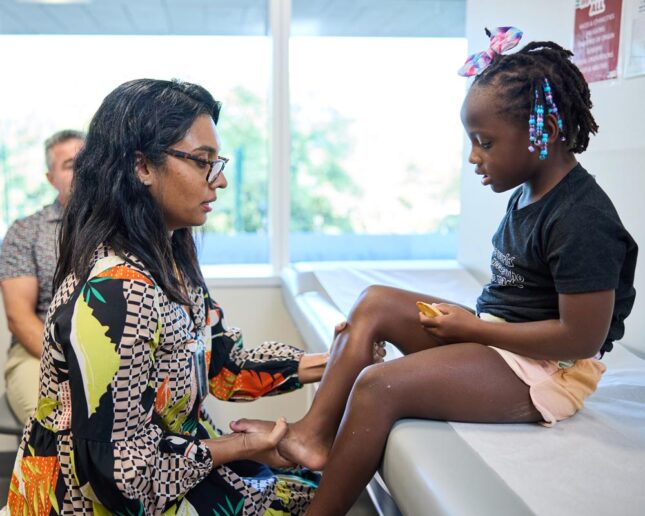WashU Medicine provides unmatched clinical training.
From year one, students play an integral role in hands-on patient care, working in small groups with master clinicians, residents and fellows at one of the nation’s leading academic medical centers.
Clinical learning at WashU Medicine emphasizes:
- The scientific underpinnings of medicine
- Cultural competence and appreciation of diversity
- Patient-centered communication
- Teamwork and collaboration
- Preventive care and health maintenance
- Compassionate and caring health care delivery

Early bedside clinical training
You’ll begin learning to take histories and to examine patients soon after starting your program. We’ll help you hone your clinical skills through standardized patients (month one), videotaping and feedback of patient encounters, the simulation center (month 16), and three clinical immersions in Phase 1 of the Gateway Curriculum — one each in the ambulatory/ED (outpatient clinics and emergency departments), inpatient and procedural environments.
Throughout the program, you may rotate through Barnes-Jewish and St. Louis Children’s hospitals — our main teaching hospitals — as well as other hospitals and federally qualified health centers throughout the St. Louis area and rural Missouri. Many students do rotations at other institutions, both inside and outside the United States.
Diverse patient population
Uniquely positioned in the heart of America, St. Louis is home to people from all walks of life including all races, ethnicities and socioeconomic statuses. At our hospitals and clinics, we welcome patients from urban, suburban and rural communities, with a mission to care for the underserved and underinsured.
As a WashU Medicine student, you’ll learn at the bedside of this large and diverse patient population and come face to face with the full spectrum of medical issues, from the ordinary to the most rare and complex. You’ll see firsthand that where people live, work, learn and play impacts their health, and you’ll work to shape inclusive solutions to health inequities in the communities we serve.
Annual clinical volume statistics
We partner with hospitals and health care centers across the region, where WashU Medicine faculty physicians care for patients and train medical students, residents and fellows. Stats below are from Fiscal Year 2023.
78 specialties and subspecialties
1,959 clinical faculty
78,771 hospital discharges
1.6 million outpatient visits
12,000 newly diagnosed cancer patients
275,000 pediatric patient visits
Discover more about our hospital partners and facts about our school »